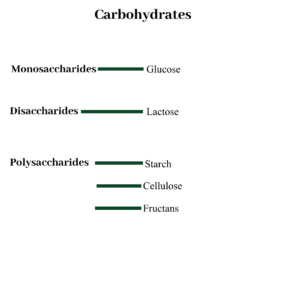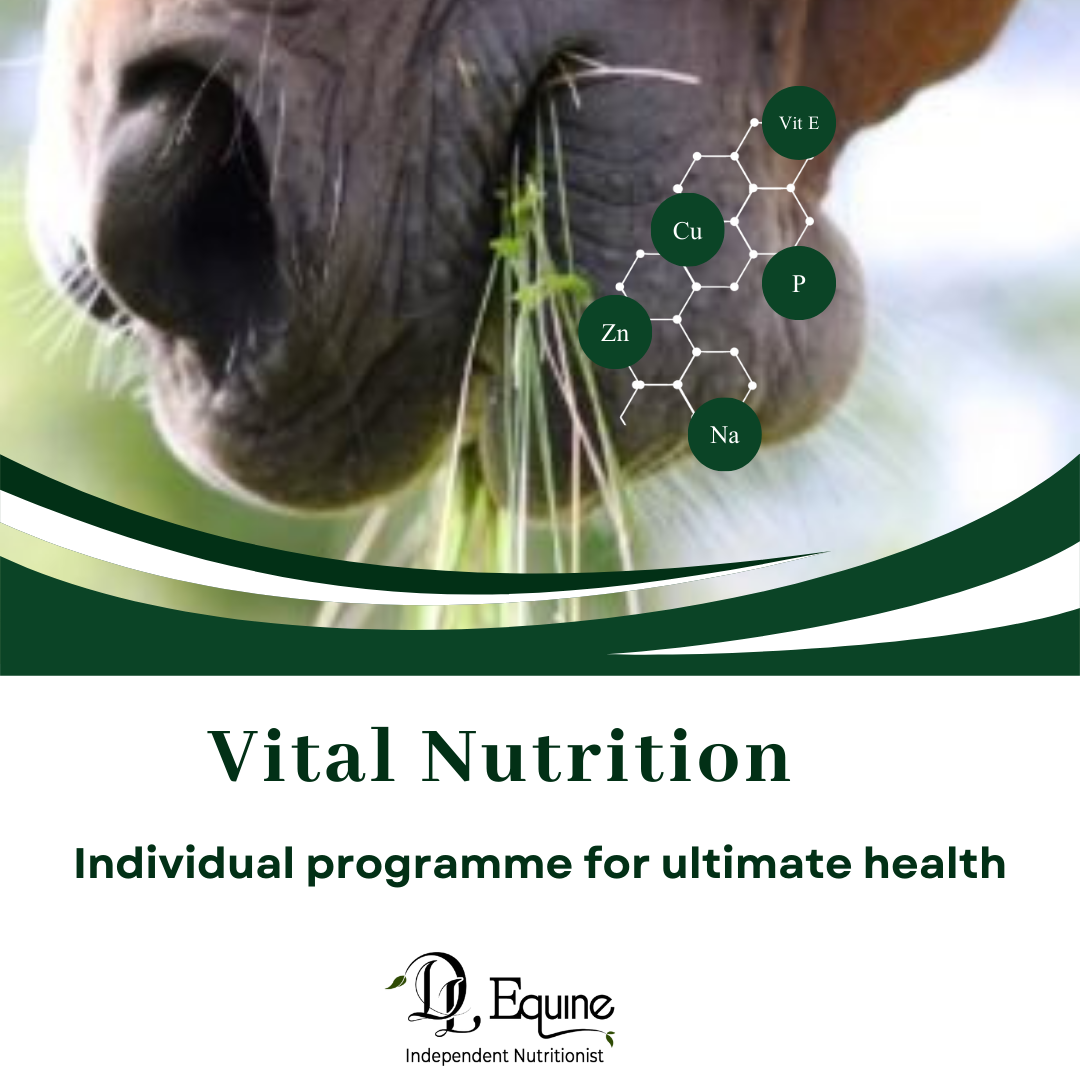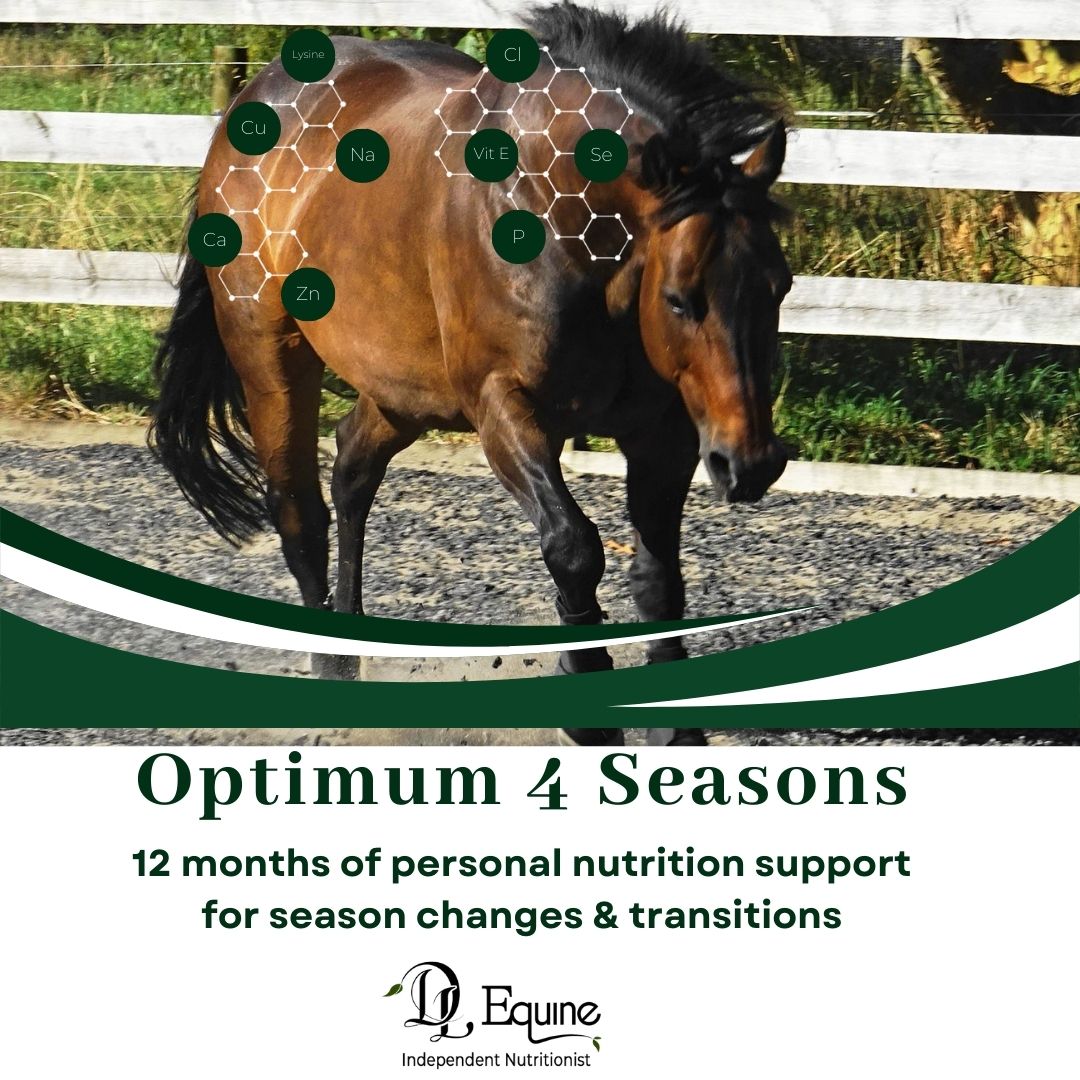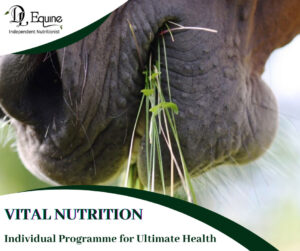Have you heard the news about horses and sugar? What about starch? Then there are carbohydrates too aren’t there?
Have you seen all these fancy terms used NSC, Fructans, WSC?
What do they all mean? Confused yet??
Let’s break it down… (horse nutrition pun)
What are they? The are all Carbohydrates
This group of sugar-based compounds, also called saccharides, comprises important energy sources for the horse.

Description of Carbohydrate Groups
Acid detergent fiber (ADF)
- A measure of the least digestible carbohydrates in the feed,
primarily cellulose and lignin.
Neutral detergent fiber (NDF)
- Total plant cell wall carbohydrates, including ADF and hemicellulose;
- Often considered an indicator of forage quality and intake potential (lower NDF=less hard-to-digest fiber=higher “quality,” higher intake).
- A measure of fiber consisting of hemicellulose, cellulose, and lignin.
Crude fiber (CF)
- A crude measurement of fiber.
Nonstructural carbohydrates (NSC)
- These are plant cell carbohydrates that are free in the cell and not part of the cell wall.
- A measure of the easily digestible carbohydrates, including simple sugars and fructans.
- Horses sensitive to glucose should be fed a low-NSC diet.
Water-soluble carbohydrates (WSC)
- A measure of water-soluble sugars, including simple sugars and fructans.
Ethanol-soluble carbohydrates (ESC)
- A measure of ethanol-soluble sugars, including mostly monosaccharides and disaccharides.
- These carbohydrates are a subset of WSC that are primarily digested in the small intestine and give a true glycemic (blood sugar) response.
- However, some fructans can be included in this fraction.
- High ESC generally means a feed will generate a high glycemic response (unless there is a high level of fructans in this fraction).
- Might be helpful for hard-working horses that need lots of energy, not so good for horses that are sensitive to large blood sugar changes (i.e., insulin-resistant horses).
Fructans
- Carbohydrate compound made up of many fructose molecules (complex sugar); fermented and digested primarily in the large intestine.
- Present in primarily grass forages; one type has been shown, at high doses in trials to induce laminitis.
Starch
- A polysaccharide composed of many linked glucose molecules found mainly in grains; mostly digested in the small intestine, where they are broken down and absorbed as glucose (simple sugar).
- Low starch content generally means little glucose will be absorbed in the small intestine (low glycemic response).
- This is good for horses that can’t handle large blood sugar changes (i.e., insulin-resistant horses).
- High starch generally means a high glycemic response.
What is found in the different feed types
Cereal grains (e.g., corn, oats, or barley) are full of highly digestible carbohydrates such as simple sugars and starch.
Pasture, hay and chaff will have some simple sugars and starches, but they are higher in fiber and therefore provide less digestible energy per unit weight.
Although grains provide more energy, forage fibre feeds are incredibly important for horse gut health as the large intestine delicate microbe population requires a constant fibre source for fermentation. Therefore, a horse should consume fibre feeds in much higher quantities than grain to keep the gut happy and healthy.
Common Carbohydrates and Their Dietary Sources
| Carbohydrate Type | Description | Source |
| Simple sugar | Includes glucose, fructose, xylose, and galactose and disaccharides such as lactose | Found in varying amounts in most plant-based feeds |
| Fructan | A short chain of fructose molecules. | Cool-season grasses |
| Starch | Polysaccharide; a long chain of glucose joined by alpha bonds. | Found primarily in cereal grains, but also in varying amounts in forages. |
| Cellulose | Polysaccharide; a long chain of glucose joined by beta bonds. Indigestible by mammalian enzymes. | Found in most plant-based feed sources, but in higher amounts in forages. |
What do they do?
They are a major component of forages, a staple of the horse’s diet, and are required for digestive health. Which makes understanding them and utilizing them in your horse’s diet correctly crucial. See Nutrition Programmes for a carefully formulated diet.
A horse will consume the carbohydrates found in both forages and grains, then the actions of enzymes found primarily in the small intestine break disaccharides and starch into monosaccharides that are then absorbed into the bloodstream, where they are converted for energy or energy storage (more on this later).
Dietary fibers, such as cellulose, hemicellulose, are not digested by enzymes, but instead undergo fermentation.
It’s important to evaluate your feed to determine the different carbohydrate types it contains.
Many types have the ability to cause gastric upset in the horse.
Disaccharides and Starch
A horse eats the carbohydrates found in forages and grains. Then in the small intestine actions of enzymes break disaccharides and starch into monosaccharides.
These are then absorbed into the bloodstream, where they are converted for energy or energy storage for use later.
Cellulose, Hemicellulose, Fructans
Dietary fibers, on the other hand, such as cellulose, hemicellulose, and pectins, are not digested by enzymes, but instead undergo a process called fermentation in the caecum and colon of the horse.
These areas of the gut house large populations of special microbes which have the ability to break down these complex fibrous carbohydrates into volatile fatty acids that are then absorbed and used as energy sources (calories).
However not all fibres are equal in their overall digestibility; for example, cellulose is typically only 40% digestible, hemicellulose 50% digestible, and lignin is not at all digestible.
In contrast, pectins and fructans are believed to be highly fermentable and have higher overall digestibility.
Limitations and problems
Starch:
A horse is limited in his ability to digest starch, especially in large amounts.
When horses consume too much starch (such as with a high-grain diet, enzymes in the small intestine cannot properly digest it.
Undigested starch will, therefore, reach the large intestine and the microbes within it.
These microbes are usually accustomed to dealing with large amounts of starch, which could cause a disruption to the microbial ecosystem.
This can result in the overproduction of other acids such as lactic acid and/or gas, potentially resulting in colic.
Alternatively, it could result in the death of some microbes, leading to a chain of events which can result in laminitis.
Diets high in starch and sugar result in an increase in blood glucose levels, this is followed by an increase in insulin. A continual rise and fall and rise of insulin can result in insulin resistance with all the health issues that can be a result of this.
Further consequence of the high sugar diet can be unwanted excitability and behavior Definitely something owners want to avoid.
NSC, Fructans
If you own a horse with laminitis or a metabolic problem such as insulin resistance or Cushing’s disease, chances are you’ve heard recommendations to minimize his intake of nonstructural carbohydrates (NSC). NSC includes starch plus water soluble carbohydrates – simple sugars, plant sugars and fructans.
The ideal values of these fractions for sensitive horses have not been established, but, according to Lori Warren, PhD, PAS, associate professor in the University of Florida’s Department of Animal Sciences, “Concentrates between 12-13% NSC or lower could be categorized as low-starch and may be suitable for these horses, though they likely don’t need concentrates to begin with.”
Amy Gill, PhD, a private equine nutritionist based in Lexington, Ky., recommends that for sensitive horses, hay total starch and sugar should be below 10% and the total diet below 15%.
According to Gill, if a hay analysis is unavailable and the horse is symptomatic, owners can soak the hay (for 30-45 minutes) to help reduce any soluble sugars that might be present.
Many nutritionists and feed analysts are now saying that NSC isn’t the best measure to evaluate when evaluating a horse’s intake. This is primarily due to significant variation in the way different laboratories measure NSC components and calculate its value.
Also is the fact that NSC doesn’t give you a complete picture of the types of carbohydrates in a feed or forage that can affect your horse’s condition.
The group of carbohydrates combined under the NSC label includes nearly all the non-fiber carbohydrates–those that come from plant cell contents rather than tough, fibrous cell walls.
They are generally more easily digestible and yield more energy to the horse than the fiber carbohydrates, but they’re not all digested in the same part of the horse’s gastrointestinal tract or by the same process.
Therefore, they affect a horse’s blood sugar and gastrointestinal health differently, and this is why it’s important that they be evaluated separately.
What Group of Carbohydrates and Levels to Check
WSC, ESC, Starch
Instead of looking at NSC, nutritionists are recommending that we evaluate water-soluble carbohydrates, ethanol-soluble carbohydrates, and starch.
Each describes carbohydrates that affect the horse differently based on how they’re digested.
Water-soluble carbohydrates (WSC)
Simple sugars and fructans
These include carbohydrates that are extracted from a sample by dissolving them in water.
Interpreting and using this value depend on the proportions of sugars and fructans in the sample;
• Simple sugars are digested and absorbed in the small intestine and have a significant impact on blood sugar (glycemic response),
• Fructans are fermented in the large intestine and induce a much smaller response.
• However, when eaten in large amounts, some fructans have been shown to cause laminitis due to disruption of the bacterial population in the large intestine.
• Fructans are rarely analyzed separately from other WSC.
Ethanol-soluble carbohydrates (ESC)
These are a subset of WSC that is primarily digestible in the small intestine and includes much fewer fructans
• These carbohydrates are soluble in 80% ethanol; As such, this fraction is generally used to evaluate one set of carbohydrates in a feed that will induce a high glycemic response.
Starch
Made up of many glucose molecules
• The starches are mostly broken down to single glucose molecules. Thus, they also induce a high glycemic response.
Summary:
When considering carbohydrates, consider not only the total energy you are providing horse, but also the sources of these calories.
The number of calories a horse requires depends largely on his body and activity level.
While a nutritionist can calculate the approximate number of calories your horse needs, a good gauge to determine if your horse is meeting his caloric requirements is to watch for any fluctuations in his body weight.
• For a given level of activity, is the horse gaining or losing weight?
• If your horses weight stays consistent, you are meeting his caloric requirements.
In cases of a horse with metabolic issues take care to be aware of the levels of the different groups of carbohydrates. If you own a horse with health problems such as Insulin Resistance or has laminitis, it is advisable to keep the diet ESC below 10%. It is the best measure of the simple sugars that can trigger an insulin response when they are digested and absorbed.
Diet for a Insulin Resistant horse:
Starch and ESC are low, there will be little glucose available to be absorbed from the small intestine. This would mean a low glycemic response.
Diet for the Laminitis horse:
WSC and starch values are low, there should be only a small amount of material reaching the large intestine that will be rapidly fermented.
Dale Logan
BSc, Post Grad Dip, Equine Nutrition, Massey University.
Equine Nutrition Advanced Uni of Guelph, Cert Equine Herbal Medicine, Cert NZ Animal Welfare Legislation
DL Equine
Resources:
- Amy Gill, PhD, a private equine nutritionist, Lexington, Ky
- Paul Sirois, manager of Dairy One/Equi-analytical Forage Analysis Laboratories
- Lori Warren, PhD, PAS, associate professor in the University of Florida’s Department of Animal Sciences






